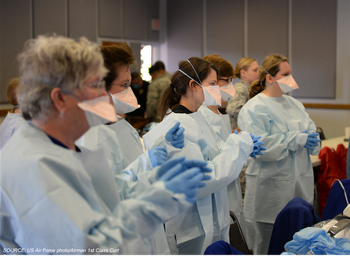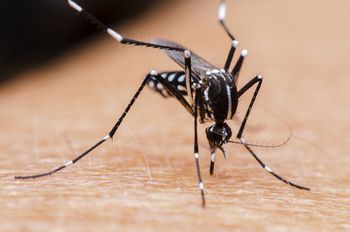
A team of investigators inadvertently discovered a way to preserve vaccines at room temperature for long periods of time.

A team of investigators inadvertently discovered a way to preserve vaccines at room temperature for long periods of time.

The World Health Organization says tens of millions of medical masks, gloves, and goggles will be needed each month as healthcare professionals attempt to deal with the spread of COVID-19.

Investigators recently mapped out influenza and pneumonia cases among residents of long-term care facilities. They found distinct regional variations.

New research finds a small fraction of group A streptococcus strains are showing mutations that could lead to lower antibiotic susceptibility, and possibly someday resistance.

Mosquito-borne viruses can wreak havoc and be exceedingly difficult to track and control. New research suggests one tool to stop outbreaks might be a skin cream that’s already widely available around the world.

Over the past decade and a half, more Americans have begun to receive STD-related diagnoses and care in a primary care setting. New recommendations from the CDC aim to help ensure quality care amid the shift.

In a head-to-head comparison, investigators found that 3 enhanced flu vaccines provided better protection for elderly patients compared to standard-dose vaccines.

Even as hospitals try to stop health care-associated illnesses, they can often have difficulty identifying which employees are too sick to work. New research suggests a high number of health care employees work while experiencing symptoms of illness.

A previously uncharacterized protein called S protein helps Group A Streptococcus bind to the membrane of red blood cells in order to hide from the patient’s immune system.

Fifteen years after the launch of a program to help bring HIV treatment to low-income countries, an FDA analysis shows the program is working, but there is room for improvement.

Treatment-naive patients who are prescribed INSTI-based ART experienced weight gain and systolic blood pressure increases higher than peers on other forms of ART.

A new study concluded physicians frequently deviate from WHO guidelines when treating children and newborns with sepsis. It’s unclear what impact such decisions have on patient outcomes.

Overall deaths of young children attributable to lower respiratory infections have dropped by more than half in the past 3 decades. However, the rate of death remains far too high considering that most of these deaths are preventable.

Artificial intelligence and machine learning are being used to track and predict the movement of infectious diseases. Investigators hope these tools will lead to fewer widespread infections in the future.

A large majority of sepsis patients are pathogen-negative, yet empiric prescribing of antibiotics varies significantly from patient to patient.

In the first study of its kind, investigators found ceftolozane/tazobactam is more effective than the most common therapy for multidrug-resistant P aeruginosa.

STI rates have been growing significantly in the United States and around the world. To fix the problem, we need a renewed focus on this therapeutic area, according to top public health officials.

A new paper offers a compelling theory as to why it takes so long for antibiotics to defeat tuberculosis.

A new article aims to help health care organizations set up antimicrobial stewardship programs based on sound scientific evidence.

Natural disasters like hurricanes can have implications for public health, including a heightened risk of infectious diseases.

No one knows exactly why thousands of patients in dozens of states have contracted hepatitis A in recent years. In the absence of an explanation, public health officials are focusing on vaccination.

The CDC hopes the case of a patient who was hospitalized in Maryland following a hospitalization in Kenya will help raise awareness of the importance of C auris screening.

A pair of new studies is raising concern that standard malaria therapies may no longer work for large portions of the world’s malaria cases.

Public health officials are growing increasingly concerned about the health dangers of medical misinformation. However, it’s proving to be an especially difficult problem to solve.

New research assesses potential alternatives to a daily dose of emtricitabine/tenofovir. It finds mixed results.

Cases of C auris have been reported in 12 states. Investigators believe they’ve found a new way to attack the fungus using combinations of antifungal and antibacterial medications.

The recommendation means more patients will be able to access PrEP at no cost. However, it likely won’t be enough to dramatically boost PrEP usage without other systemic advances.

The Leptospira genus is much more diverse than previously thought, according to a new analysis.

A series of new innovations in the use of CRISPR to edit the genome of a filamentous rice fungus could have significant implications for human health.

A new study finds involving bedside nurses in antimicrobial stewardship and infection prevention can yield major results in a short amount of time.